After her teen daughter was diagnosed with Hypermobile Ehlers-Danlos Syndrome (EDS), American painter Amy Scoggins decided to use her platform to raise awareness of the rare inherited disease. She began making The Caretaker And The Warrior, a 3D painting of her and her daughter as they navigate life with EDS. Scoggins hopes that by making the painting and sharing her process on social media, she is raising awareness of how the disease impacts people’s lives adversely. Furthermore, her advocacy and public attention will help to push for more research and progress in finding a cure for EDS. This is why Scoggins’ efforts are aligned with the United Nations Sustainable Development Goal of Good Health and Well-Being.
Hypermobile Ehlers-Danlos Syndrome (EDS) is an inherited disorder that affects a person’s connective tissue. Common symptoms associated with EDS include joint hypermobility—where elbows, knees, and fingers are able to move beyond a person’s typical range of motion; frequent chronic muscle and bone pain; and also elastic skin that bruises easily. EDS is currently an incurable disease, with little to no medical understanding of its causes. Despite the fact that experts are able to identify that EDS is a genetic disorder, the medical field has also been unable to determine which genes are responsible for the issue.
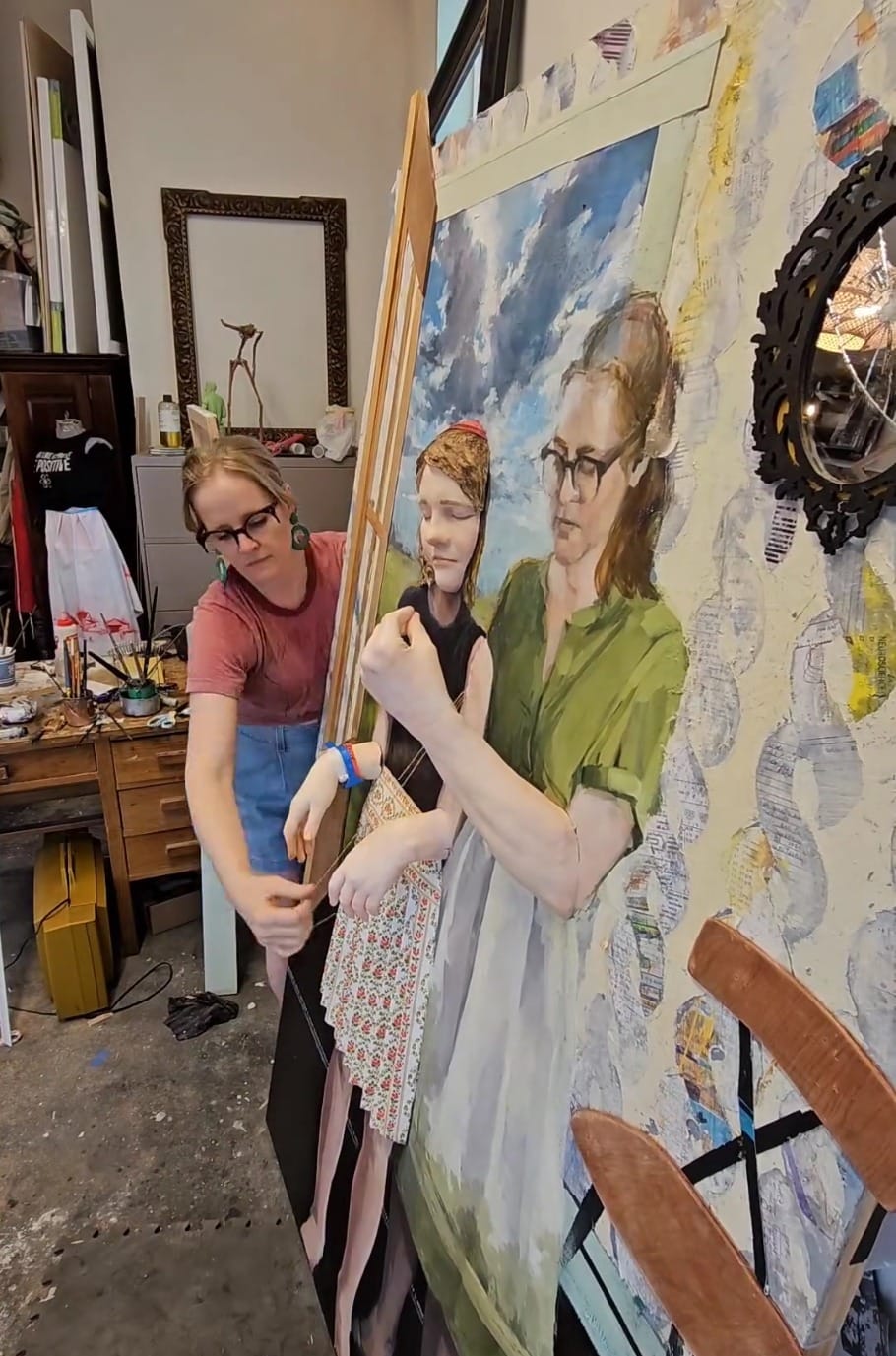
Scoggins began working on The Caretaker And The Warrior to help raise awareness for those living with EDS. Per the title, the painting portrays her taking care of her warrior teenage daughter who has been fighting her EDS diagnosis. Scoggins wants people to understand that despite her presence there as the caretaker, the piece really is about the warrior: her daughter. To drive the viewer’s eyes to her daughter, Scoggins decided to cast her daughter’s face as a sculpture on the piece, making it stand out on the otherwise flat surface of the painting. Casting her daughter’s face also allowed Scoggins to capture her daughter’s finer details, rendering her pores, hair, and scars as they are in real life. By doing so, Scoggins had managed to faithfully capture her daughter and her perseverance, making it truly a personal piece.
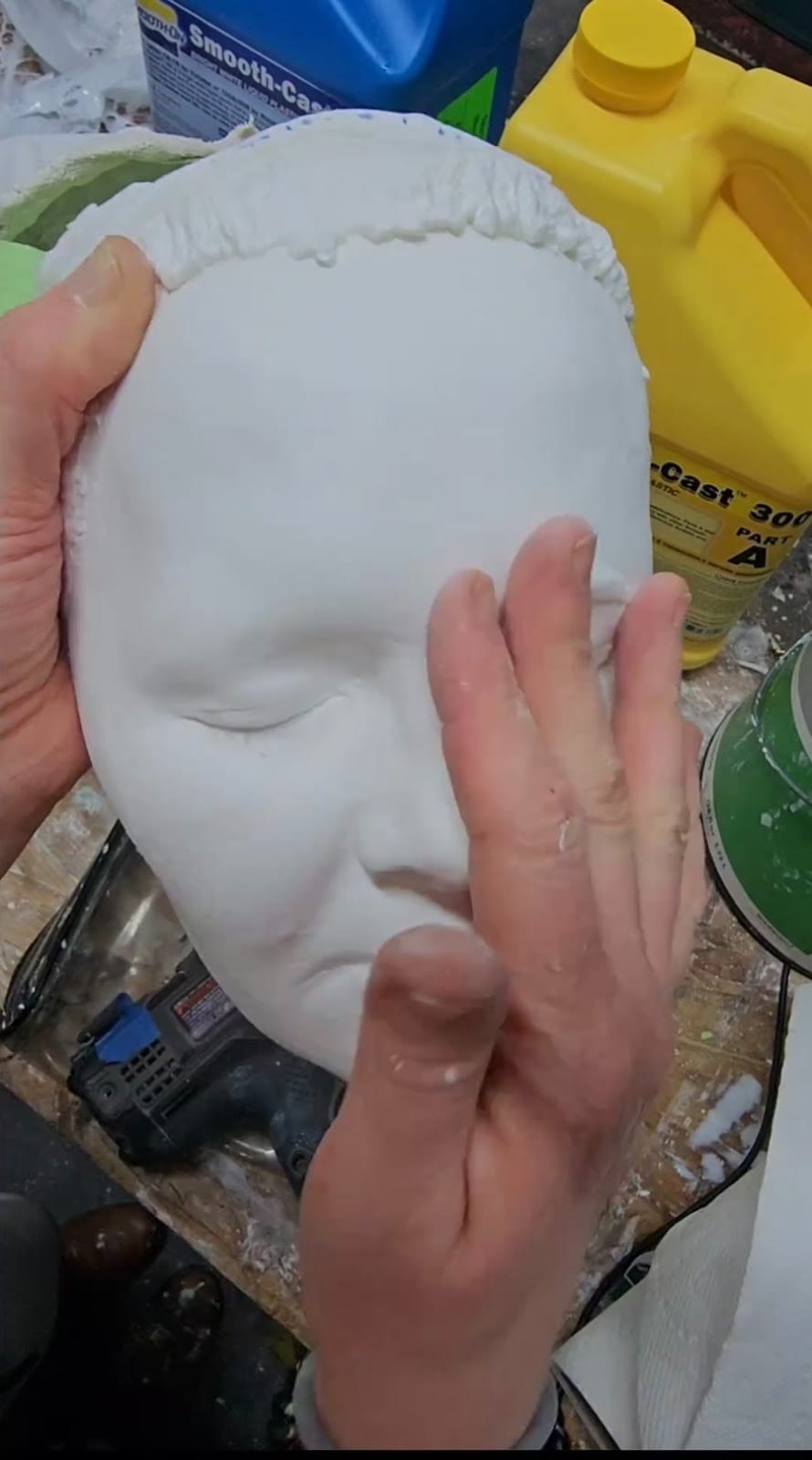
“Though my daughter is representing a universal story of chronic illness, body casting is important to this narrative to drive home the concept that this is a real person's story,” shared Scoggins about the casting process. Indeed, casting her daughter’s face has added yet another dimension to the painting. It makes people understand that EDS is affecting real people, much like themselves and those around them, giving them a way to empathize even further with those suffering from EDS.
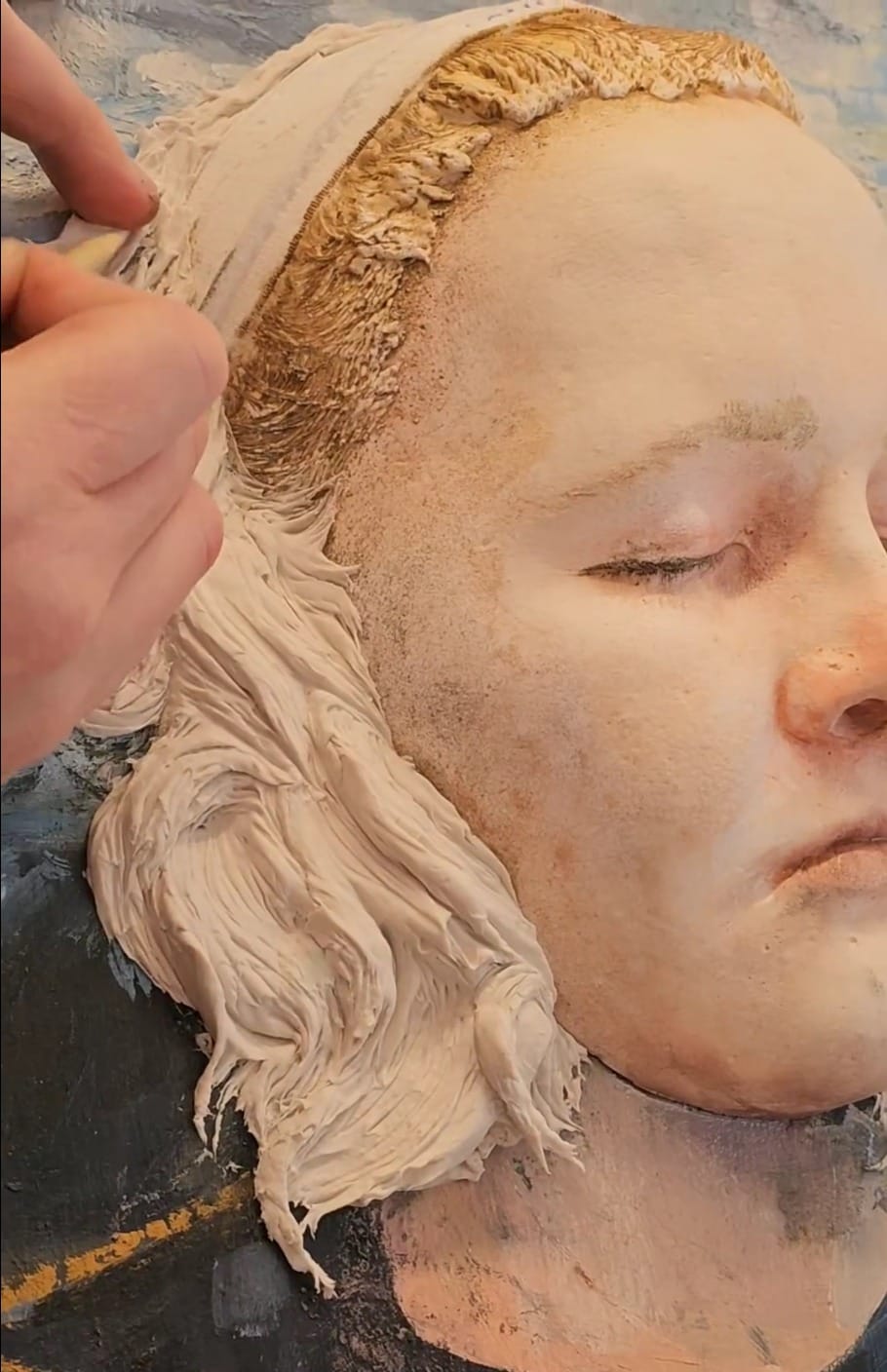
Another profound detail from the piece is Scoggins’ hand holding a needle and thread, seemingly sewing her daughter’s hand into place. The painting’s composition makes this the second detail that draws audiences’ eyes in, revealing that this is its second most important message. For Scoggins, this detail is a nod to her caring for her daughter through EDS. The illness especially affects a person’s joints; hence, taking care of her may visually feel like sewing someone’s joints into place.
“Metaphorically, it is a symbol of caretaking, but also physically, we frequently piece her back together in one way or another,” said Scoggins about the detail.
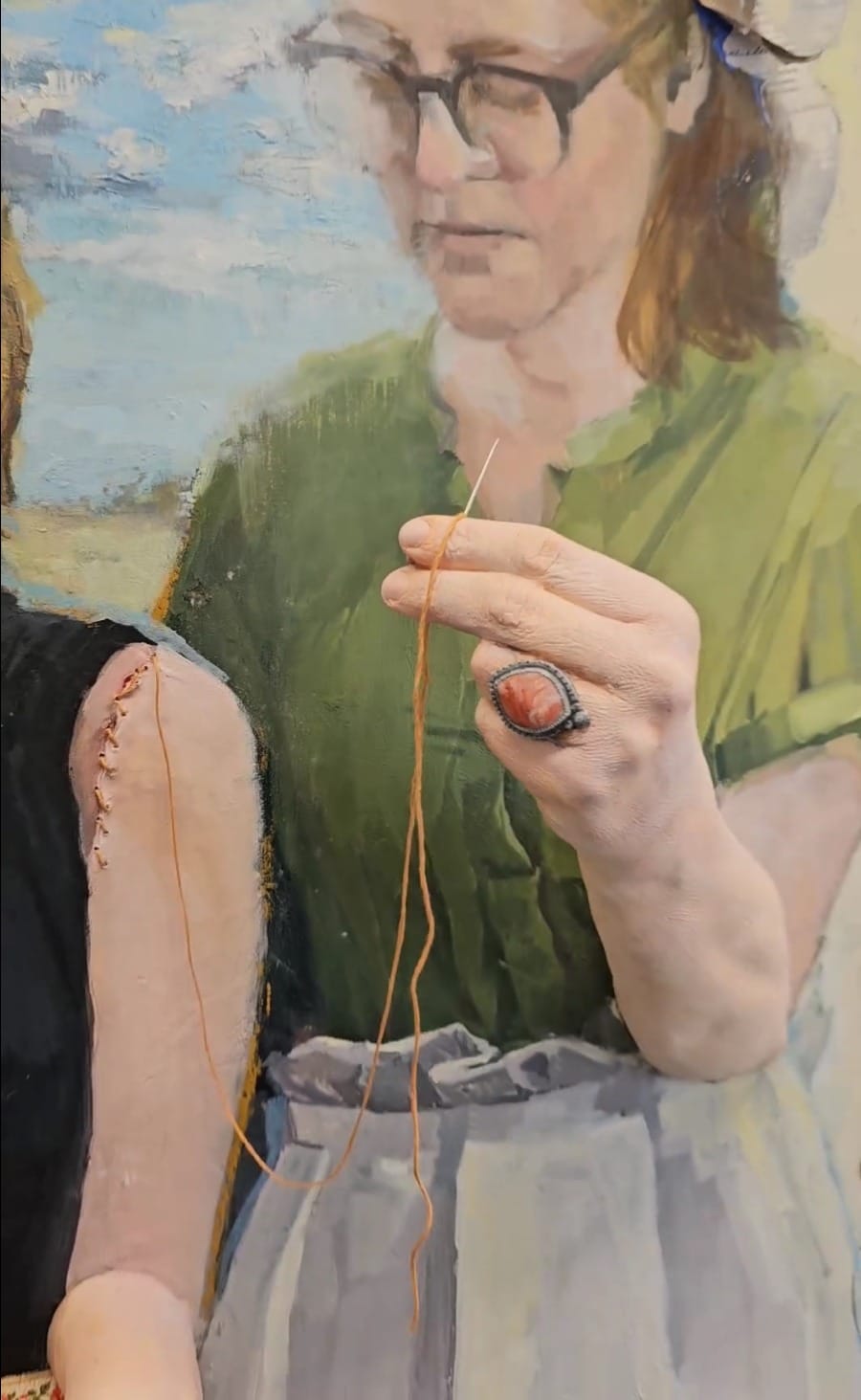
The final detail that brings the piece together is a sundial made out of a broken mirror, needles, and blood sample vials. Scoggins explains in a video that this detail alludes to the medical trauma that comes from dealing with a chronic disease without a cure. It becomes an artifact of all the days wasted treating symptoms, constant needle jabs, and blood samples taken seemingly to no end. At the end of the day, this is why Scoggins made The Caretaker and the Warrior, to campaign for a medically informed future for those living with EDS so that they are able to live their lives to the fullest, free from daily chronic pain.
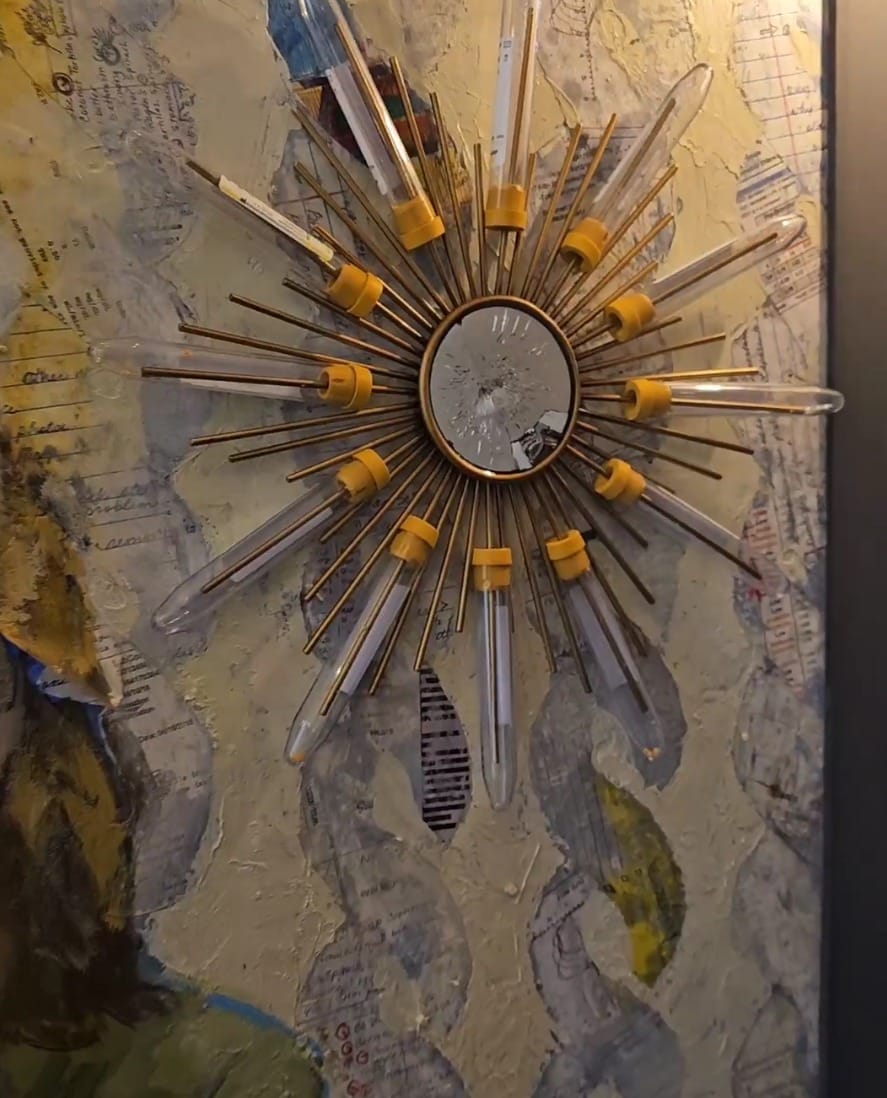
Find out more about Amy Scoggins’ paintings and their other initiatives by checking their Instagram on @amy.scoggins.
